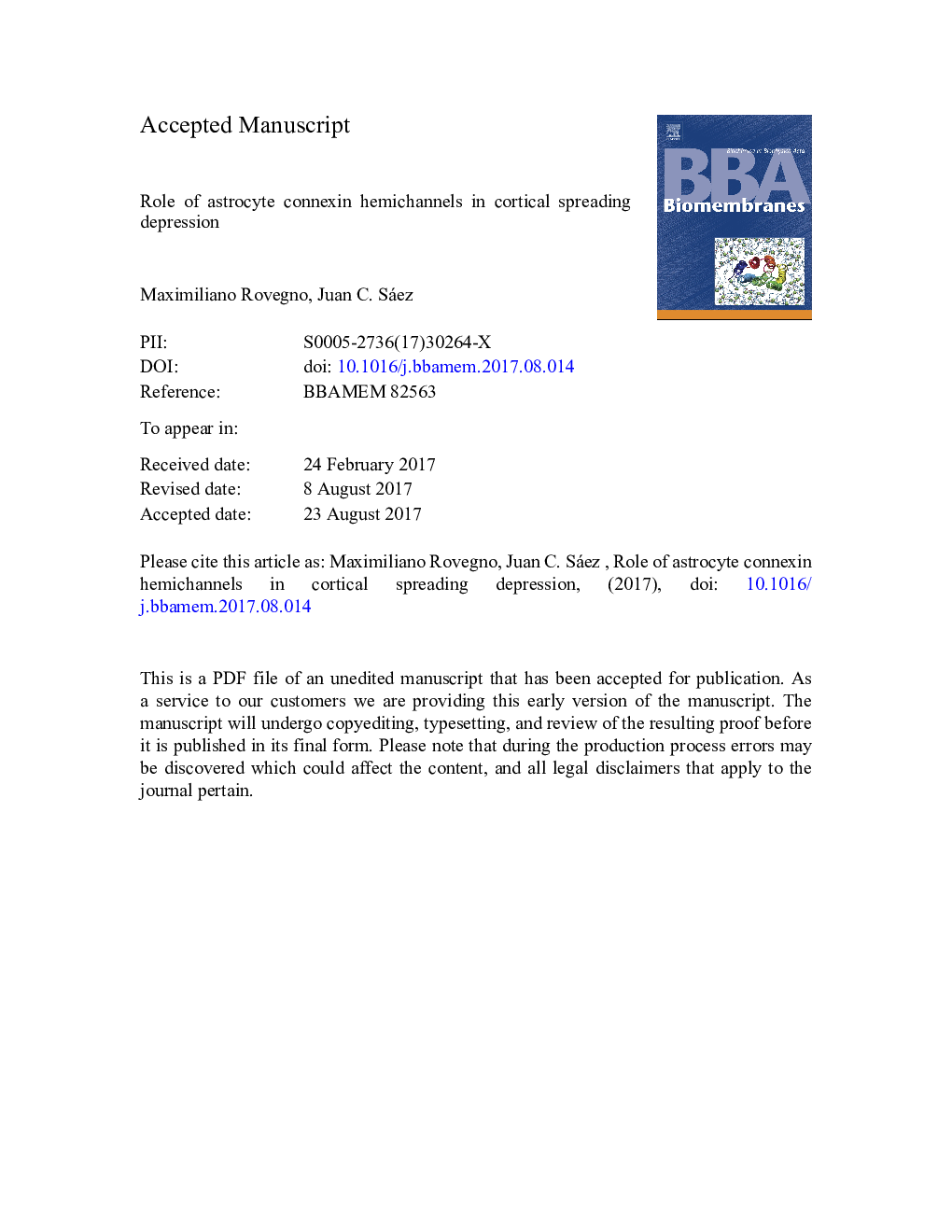| Article ID | Journal | Published Year | Pages | File Type |
|---|---|---|---|---|
| 8299838 | Biochimica et Biophysica Acta (BBA) - Biomembranes | 2018 | 31 Pages |
Abstract
Cortical spreading depression (CSD) is an intriguing phenomenon consisting of massive slow brain depolarizations that affects neurons and glial cells. It has been recognized since 1944, but its pathogenesis has only been uncovered during the last decade. Acute brain injuries can be further complicated by CSD in >Â 50% of severe cases. This phenomenon is repetitive and produces a metabolic overload that increments secondary damage. Propagation of CSD is known to be linked to excitotoxicity, but the mechanisms associated with its initiation remain less understood. It has been shown that CSD can be initiated by increases in extracellular [K+] ([K+]e), and animal models use high [K+]e to promote CSD. Connexin hemichannel activity increases due to high [K+]e and low extracellular [Ca2Â +], conditions that occur after brain injury. Moreover, glial cell gap junction channels are fundamental in controlling extracellular medium composition, particularly in maintaining normal extracellular glutamate and K+ concentrations through “spatial buffering”. However, the role of astrocytic gap junctions under tissue stress can change to damage spread in the acute damage zone whereas the reduced communication in adjacent zone would reduce cell dead propagation. Here, we review the main findings associated with CSD, and discuss the possible involvement of astrocytic connexin-based channels in secondary damage propagation. This article is part of a Special Issue entitled: Gap Junction Proteins edited by Jean Claude Herve.
Related Topics
Life Sciences
Biochemistry, Genetics and Molecular Biology
Biochemistry
Authors
Maximiliano Rovegno, Juan C. Sáez,
